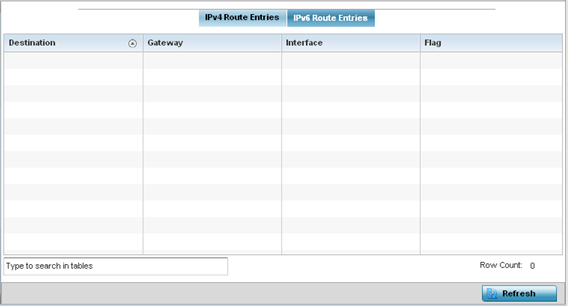The Route Entries screen displays the destination subnet, gateway, and interface for routing packets to a defined destination. When an existing destination subnet does not meet the needs of the network, add a new destination subnet, subnet mask and gateway.
To view route entries:

| Destination | Displays the IPv4 formatted address of the destination route address. |
| Distance | Lists the hop distance to a desired route. Devices regularly send neighbors their own assessment of the total cost to get to all known destinations. A neighboring device examines the information and compares it to their own routing data. Any improvement on what‘s already known is inserted in that device‘s own routing tables. Over time, each networked device discovers the optimal next hop for each destination. |
| Route | Lists the IPv4 formatted IP address used for routing packets to a defined destination. |
| Flags | The flag signifies the condition of the direct or indirect route. |
| Gateway | Displays the gateway IP address used to route packets to the destination subnet. |
| Interface | Displays the name of the controller interface or VLAN utilized by the destination subnet. |
| Metric | Lists the metric (or cost) of the route to select (or predict) the best route. The metric is computed using a routing algorithm, and covers information bandwidth, network delay, hop count, path cost, load, MTU, reliability, and communication cost. |

The IPv6 Route Entries screen provides the following information:
|